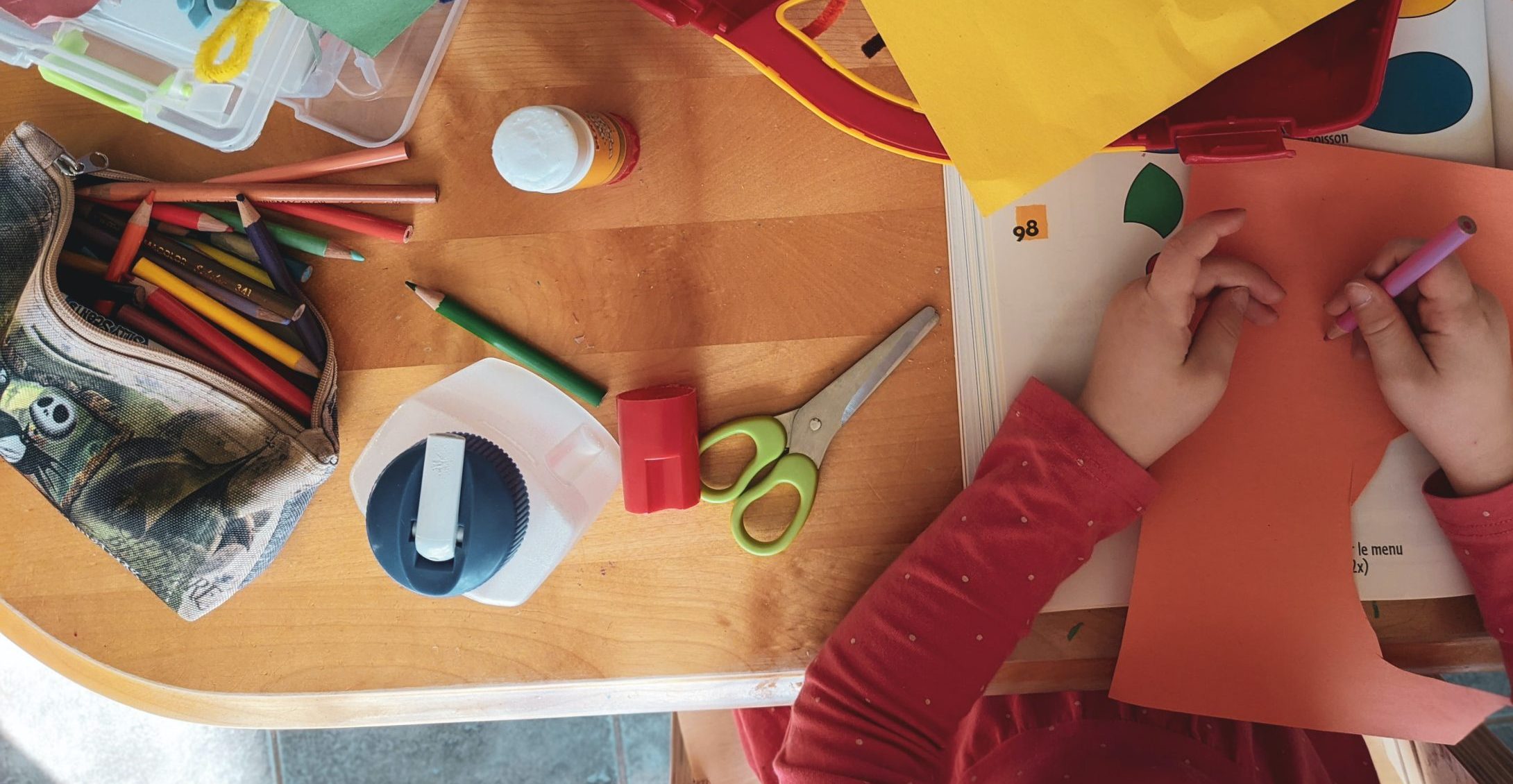Lucy Chiddick is a GP with specialist interests in inclusion health and mental health. She works at a system level around Inclusion, Trauma and Adversity with colleagues across education, health and social care. She is also neurodivergent. She is on X: @lucychiddick
The Children’s commissioners report in 20221 informed us that ‘there is no one answer or driver as to why some children do not attend school regularly, or in some cases, at all. Indeed, there is not even the data to show how many children are missing from education altogether’. It also highlighted the increased numbers of vulnerable children and those with education and health care plans (EHCPs) who remain out of school. As the evidence does not point to one clear driver or answer, the recent RCGP ‘five principles’ for GPs to promote school attendance2 appears unhelpfully simplistic, with the potential to cause harm. It is also important to note that GPs and other members of the primary care workforce are under considerable pressures, with high workloads and stretched capacity. Health system colleagues or those in clinical leadership positions may be thus better situated to provide advocacy outlined around system approaches.
…there is no one answer or driver as to why some children do not attend school regularly, or in some cases, at all. Indeed, there is not even the data to show how many children are missing from education altogether…
Attendance is a multifactorial issue – and a highly politicised one. From a systemic perspective, schools are working in a highly regulated environment– with increasingly scarce resources. In a similar scenario to GPs, teachers are experiencing high levels of stress and burn out3
Many parents have said they want their children to attend ‘A safe and supportive environment’ where they ‘can learn and thrive’4. A growing body of evidence points to the need for a positive school climate and culture which is associated with positive student outcomes. This includes factors such as safety, a sense of connectedness and belonging, social and emotional competencies, and the physical environment.5,6,7 There is a key role for teachers and other trusted adults in creating this positive ethos and culture of trust.8 A positive school climate is associated with higher student achievement, improved psychological well-being, decreased absenteeism4. Health colleagues working in a systemic context are well placed to advocate for the adoption of these approaches within a school environment.
The creation of safety, trust and opportunities for connectedness, choice and empowerment are reflective of the ‘Trauma-informed’ principles9 which have been more recently nationally recognised10 as a vital means for reducing the negative impact of trauma11 experiences and supporting mental and physical health outcomes’12. Parents are well-aware of this need – highlighting the need for trauma informed practice and better training for staff in a survey carried out by the organisation Square Peg in 2021 to understand the correlation between behaviour policies, mental health and attendance difficulties. Further findings from the survey highlighted that strict behaviour policies are ineffective, and there is a need to identify the underlying drivers of behaviour.13
Christmas states “…historically, children not attending school for a prolonged period have been viewed from a medical model perspective, which locates the problem as being ‘within the child’. This perspective limits consideration of the environmental factors playing a role in contributing to the absence. It is important to have a holistic view of the child’s needs, considering family, social, and school factors as well as the child themselves.”2 This is paramount. It may be for some children that school is their safe space, a space they can truly be themselves for a variety of individual reasons or feel ‘safe’14 for others school does not feel , and ‘children cannot learn, cannot develop in healthy ways and cannot fulfil their infinite potential if they do not feel psychologically safe’14. Exploration of this is key to gaining a holistic understanding of the child’s needs and views.
The potential reasons for non-attendance at school are vast and multifaceted. This multiple diversity in causation demands a ‘patient centred’, bespoke, curious and trauma-informed response. Christmas highlights a range of potential reasons and discusses the need for doctors to practice ‘curiously, asking the right questions, and supporting parents to make the best decision for their child’.2 Sincere curiosity is incongruent with ‘always’ advocating for attendance without consideration of the circumstances, and rights, of the child in front of them.
The multiple barriers to school attendance need to be acknowledged and discussed by policymakers, practitioners and the public in the context of the wider system. To illustrate this (among other issues that should be discussed in the primary care literature) I will focus on two (often overlapping) areas: SEN (special educational needs) in the context of neurodiversity.
The Commissioners report1 referred to the increasing numbers of children with EHCPs who are not in school – many of whom will be neurodiverse. There are multiple structural issues evident – lack of funding, lack of capacity within local authority teams (from caseworkers to educational psychologists) to complete EHCPs within the legal time frames, lack of specialist school provision and lack of appropriate provision. In schools there can be a lack of understanding and training around neurodiversity, lack of teaching assistants to support individual children and increasingly a lack of space in the school. This can be a critical resource to take children to decompress /have sensory breaks so that they able to manage a long school day. This is not an exhaustive list – many parents and teachers, will add to these.
Rather than removing their children due to ‘peer pressure’2 parents often have worked hard to navigate multiple barriers and to advocate for resources to ensure their child could remain in school for as long as possible – believing it was the best place to educate their child. They have spent many hours coaxing their child into school then feeling terrible for the ensuing few hours, whilst trying to manage other commitments and often fielding multiple calls from the school. For many parents at pick up time, the pressure of managing the day means a child is ‘in pieces’ until the next day and the cycle then repeats.
The school environment can bring sensory overwhelm to many – scratchy uncomfortable uniform, shoes and socks. Smells from the dinner hall, penetrating playground chatter, sports whistles, loud bells marking an interminably long day, noisy classrooms. Rules may make no sense, questioning them can elicit a disciplinarian response. Unspoken confusing playground rules, inability to sit still, the need to learn with your body in motion, confusing lessons (even with a one to one), singled out sitting in the corridor, headphones to block out noise, a Perspex sound barrier. Signs of being different, of not fitting in. Some feel able to accept individual adaptions better than others. From a social disability model, the environment is not adapting to meet need.
When needs are repeatedly unmet, a child can become traumatised by the environment they are in. Multiple, continuous insults which put them in a constant state of fright or flight. Freezing in the playground, unable to take a step further into in an environment which is causing harm.
Teachers who listen, who build trust and relationship can increase a child’s window of tolerance. Relationships are the “Greatest mental health intervention known to humankind” and the ‘Agents of change’ argue Bruce Perry and Maia Szalavitz in their book, ‘The Boy Who Was Raised as a Dog: And Other Stories from a Child Psychiatrist’s Notebook.’ Strong nurturing connections and creation of a sensitive, psychologically informed environment with the engagement of trauma informed principles is a good starting point.
Many children have needed the support of a specialist CAMHS team due to becoming severely depressed and suicidal as a result of their experiences. CAMHS are at breaking point – with many stories of suicidal children not being seen by crisis teams and parents at breaking point. Children sit on waiting lists for years. Early intervention and prevention is crucial.
There is often no support commissioned beyond a neurodiversity assessment (though in some areas that is starting to change) and support has to be found through un -or under-funded peer groups and voluntary sector organisations. Peer groups offer compassionate support, wise understanding, and hard lived experience on where and how to navigate what is a complex journey. In order to support their child who is at home parents have often had to reduce work hours (or stop working altogether) and so increasingly struggle to meet the basic needs of food and rent. Many parents often have to manage fines and pressures for their child to attend – often with a threat of prosecution. These peer spaces and connections are often the only places where people truly understand the impacts of caring for children let down by the system.
Navigating a difficult phone system to gain a GP appointment, parents need support, understanding, compassion and patient centred care. The DoE guidance 202216 states that schools should not request doctors’ evidence unnecessarily. However, the parent is often required provide evidence from the GP if a child is off (particularly if they are off for a prolonged period). Where a child is experiencing school trauma, they tend to need time to recuperate before they are able to engage in a learning context.
This is a small part of a bigger story but it illustrates the potential for principles and systems to be harmful, even if well intentioned. With that in mind I would like to propose some alternative ‘principles when considering neurodiversity and ‘attendance’ recognising that some of these may take additional capacity which is stretched in the current system.
- Take a trauma informed, patient centred approach – recognising that school, whilst a safe place for some children, will not feel a safe place for everyone and may cause further harm to an already traumatised child (and family).
- Consider training needs within the practice around neurodiversity and the principles of equity and effects of trauma on the Child (www.fairhealth.org.uk for the latter)
- Recognise that the caregiver knows the child well and that children often mask who they are in school. Do not let this be a barrier to referral to neurodiversity services if evidence points that way. If primary care teams in your area are unable to refer to neurodiversity services, please make sure you know the correct processes and support the family through them – including for those who are not in school and might need different ways of gaining any evidence required across different settings as these can be hard to navigate.
- Continue to listen, be curious and ensure your care reflects the needs and rights of the individual child.
References
- Children’s Commissioner. Back into school: new insights into school absence. Evidence from the three multi-academy trusts https://assets.childrenscommissioner.gov.uk/wpuploads/2022/07/cc-new-insights-into-school-absence.pdf (accessed 24th August 2023).
- https://bjgplife.com/the-role-of-the-gp-in-maximising-school-attendance/ BJGP online article (accessed 24th August 2023)
- https://www.educationsupport.org.uk/news-and-events/news/significant-signs-of-burnout-amongst-teachers/ (accessed 24th August 2023)
- https://assets.publishing.service.gov.uk/government/uploads/system/uploads/attachment_data/file/1099677/Working_together_to_improve_school_attendance.pdf(accessed 24th August 2023)
- https://www.pacesconnection.com/g/aces-in-education/fileSendAction/fcType/5/fcOid/480951776026107503/fodoid/480951776026107502/Trauma%20and%20Learning%20Policy%20Institute%20%28TLPI%29Final-Report_Trauma-Sensitive%20Schools%20Descriptive%20Study_American%20Institutes%20for%20Research_118%20pages.pdf(accessed 24th August 2023)
- https://scholar.harvard.edu/files/mkraft/files/kraft_marinell_yee_2016_school_contexts_teacher_turnover_and_student_achievement_aerj.pdf(accessed 24th August 2023)
- https://files.eric.ed.gov/fulltext/EJ1098022.pdf (accessed 24th August 2023)
- https://education.gov.scot/media/umcdcdhd/nih087-compassionate-and-connected-classroom.pdf(accessed 24th August 2023)
- https://store.samhsa.gov/sites/default/files/d7/priv/sma14-4884.pdf (accessed 24th August 2023)
- https://www.gov.uk/government/publications/working-definition-of-trauma-informed-practice/working-definition-of-trauma-informed-practice (accessed 24th August 2023)
- Ellis W, Dietz WH, Chen KD. Community Resilience: A Dynamic Model for Public Health 3.0. J Public Health Manag Pract. 2022 Jan-Feb 01;28(Suppl 1):S18-S26. doi: 10.1097/PHH.0000000000001413. PMID: 34797257.
- Felitti, V. J., Anda, R. F., Nordenberg, D., Williamson, D. F., Spitz, A. M., Edwards, V., . . . Marks, J. S. (1998). Relationship of childhood abuse and household dysfunction to many of the leading causes of death in adults: The Adverse Childhood Experiences (ACES) Study. American Journal of Preventive Medicine, 37(5), 245–258. https://pubmed.ncbi.nlm.nih.gov/9635069/ (accessed 24th August 2023)
- Square Peg & Not Fine In School behaviour survey August 2021 https://www.teamsquarepeg.org/_files/ugd/f3759d_9bc318bb2d204585aa0bb592932be343.pdf(accessed 24th August 2023)
- https://static.nya.org.uk/static/f3fcc0c77f1f2d3b579af6274648540b/Between-the-lines-final-version.pdf(accessed 24th August 2023)
- Six Essentials of Trauma-Informed Practice (Mary Meredith). In: Square Pegs: Inclusivity, compassion and fitting in. A guide for Schools. Fran Morgan with Ellie Costello. 2023
- https://assets.publishing.service.gov.uk/government/uploads/system/uploads/attachment_data/file/1099677/Working_together_to_improve_school_attendance.pdf (accessed 26th August 2023)
Featured photo by Sigmund on Unsplash









